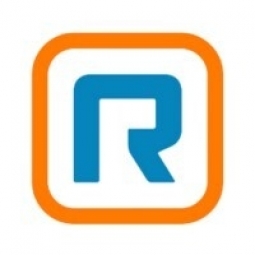技术
- 功能应用 - 库存管理系统
- 传感器 - 全球定位系统
适用行业
- 城市与自治市
- 运输
适用功能
- 维护
- 仓库和库存管理
用例
- 公共交通管理
- 智慧城市运营
服务
- 系统集成
- 培训
关于客户
CycleHop 是一家中型公司,代表市政当局、大学和企业运营自行车共享业务。该公司还就这些计划的创建提供咨询。 CycleHop 是最大的智能自行车运营商,利用其自行车内置的 GPS 定位器和数字锁等智能技术。该公司以许多不同的名称运营,例如圣莫尼卡的 Breeze Bike Share、奥兰多的 Juice 或亚利桑那州凤凰城和梅萨的 Grid。在某些情况下,CycleHop 的客户是大学或在其校园内提供自行车的公司。该公司的业务遍及美国和加拿大的 15 个城市。
挑战
CycleHop 是一家位于加利福尼亚州圣莫尼卡的中型公司,代表市政当局、大学和企业运营自行车共享业务。该公司还就这些计划的创建提供咨询。 CycleHop 的业务遍及美国和加拿大的 15 个城市,需要现场运营人员与位于坦帕的中央运营中心之间不断沟通。该公司在协调日常活动方面面临挑战,例如修理和保养自行车、补充中转站的物资以及响应客户问题。该公司还需要跟踪其库存,并确保每个公交站的自行车架既不空也不太满。此外,CycleHop 必须满足其运营的每个城市的清洁和安全检查的具体合同要求。
解决方案
CycleHop 采用了团队消息传递工具 RingCentralGlip™,以促进现场技术人员与中央运营中心之间的即时沟通。现场操作人员在平板电脑上使用 Glip 移动应用程序,而中央操作中心的员工在 PC 上使用 Glip。这使他们能够协调日常活动并派遣现场工作人员进行维修。 CycleHop 还将 Glip 与 RingCentral Office® 结合使用作为其商务电话系统,并使用 RingCentral Meetings™ 进行在线视频会议和屏幕共享。为了跟踪其库存,CycleHop 的自行车库存系统生成警报,并转发到该城市的 Glip 运营团队对话。该公司还广泛使用 Glip Tasks 为员工分配工作,例如重复性维护任务。 Glip 还帮助 CycleHop 管理和跟踪全国 6,000 多辆自行车,并协调地方一级的活动。
运营影响
数量效益

Case Study missing?
Start adding your own!
Register with your work email and create a new case study profile for your business.
相关案例.

Case Study
Turning A Stadium Into A Smart Building
Honeywell created what it called the “intelligent system” for the National Stadium in Beijing, China, turning the venue for the opening and closing events at the 2008 Summer Olympics into a “smart building.” Designed by highly controversial artist Ai Weiwei, the “Bird’s Nest” remains one of the most impressive feats of stadium architecture in the world. The 250,000 square meter structure housed more than 100,000 athletes and spectators at a time. To accommodate such capacity, China turned to Honeywell’s EBI Integrated Building Management System to create an integrated “intelligent system” for improved building security, safety and energy efficiency.
.png)
Case Study
Smart Street Light Network (Copenhagen)
Key stakeholders are taking a comprehensive approach to rethinking smart city innovation. City leaders have collaborated through partnerships involving government, research institutions and solution providers. The Copenhagen Solutions Lab is one of the leading organizations at the forefront of this movement. By bringing together manufacturers with municipal buyers, the Copenhagen Solutions Lab has catalyzed the development and deployment of next-generation smart city innovations. Copenhagen is leveraging this unique approach to accelerate the implementation of smart city solutions. One of the primary focus areas is LED street lighting.

Case Study
Airport SCADA Systems Improve Service Levels
Modern airports are one of the busiest environments on Earth and rely on process automation equipment to ensure service operators achieve their KPIs. Increasingly airport SCADA systems are being used to control all aspects of the operation and associated facilities. This is because unplanned system downtime can cost dearly, both in terms of reduced revenues and the associated loss of customer satisfaction due to inevitable travel inconvenience and disruption.

Case Study
IoT-based Fleet Intelligence Innovation
Speed to market is precious for DRVR, a rapidly growing start-up company. With a business model dependent on reliable mobile data, managers were spending their lives trying to negotiate data roaming deals with mobile network operators in different countries. And, even then, service quality was a constant concern.

Case Study
Buoy Status Monitoring with LoRa
The Netherlands are well-known for their inland waterways, canals, sluices and of course port activities. The Dutch Ministry of Infrastructure indicates that there are thousands of buoys and fixed items in and near water environments that would profit from IoT monitoring. One of the problems with buoys for example, is that they get hit by ships and the anchor cable breaks. Without connectivity, it takes quite some time to find out that something has happened with that buoy. Not to mention the costs of renting a boat to go to the buoy to fix it. Another important issue, is that there is no real-time monitoring of the buoys at this moment. Only by physically visiting the object on the water, one gains insight in its status.








